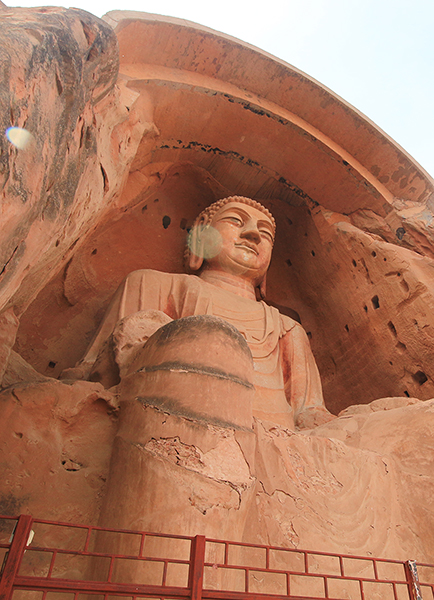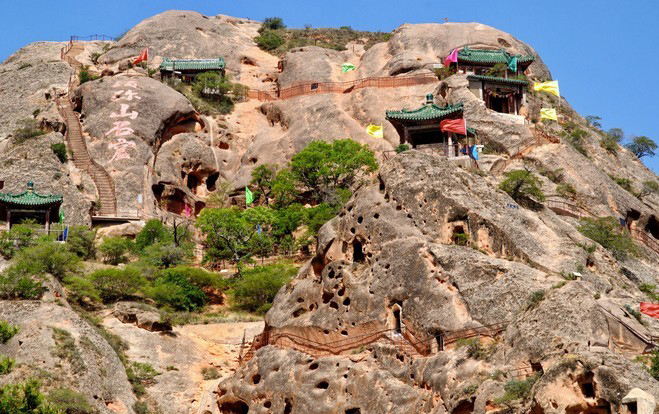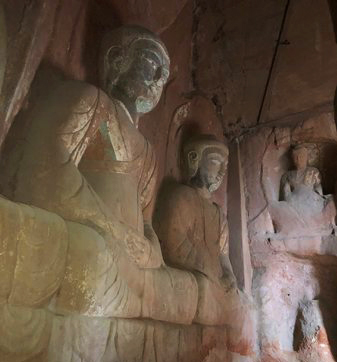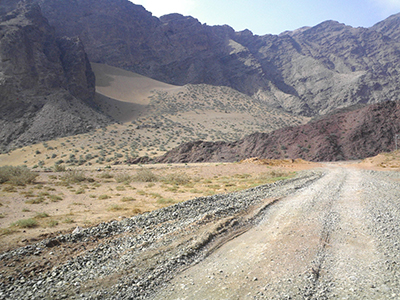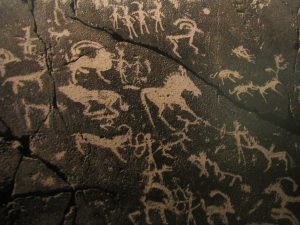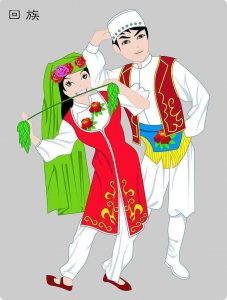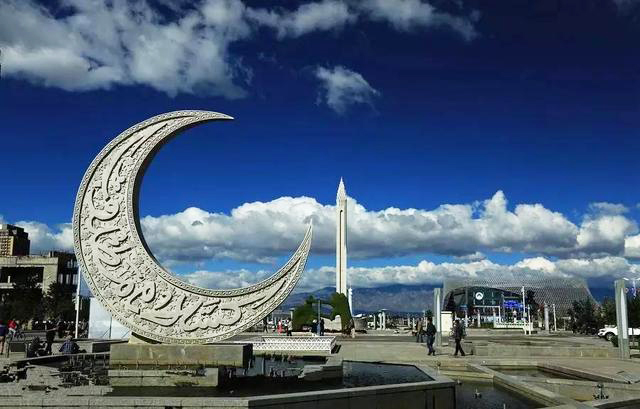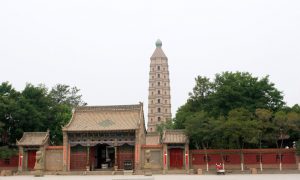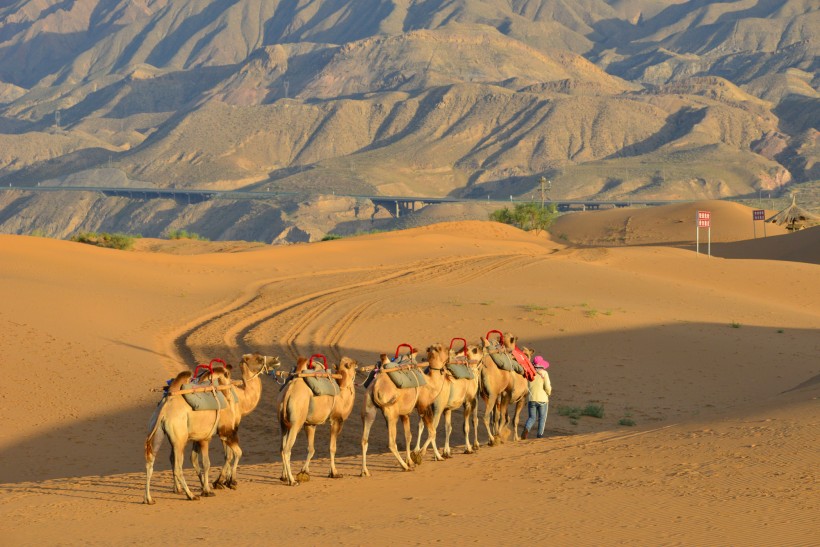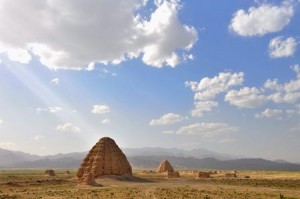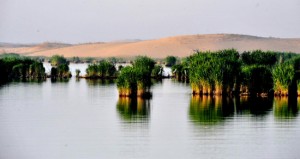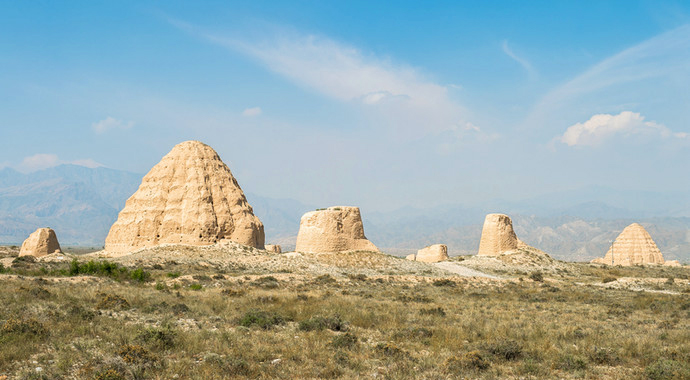
Rising like gigantic beehives in the Gobi Desert, the Western Xia Tombs are something of a historical anomaly. Their unusual shape has earned them the nickname the ‘Oriental Pyramids’. Resting on the eastern slope of the Helan Mountains, just 35 kilometres (22 mi) from the provincial capital of Yinchuan, they represent one of the last known remnants of a lost kingdom. When the illustrious Tang Dynasty (618-907) collapsed, a nomadic people known as the Tanguts took control of Ningxia, Gansu province, eastern Qinghai province, northern Shaanxi province, northeastern Xinjiang, southwest Inner Mongolia, and southernmost Outer Mongolia. They ruled the region under the Western Xia Dynasty (1038-1227) for nearly 200 years, before Genghis Khan and his Mongolian horde conquered them in 1227.
The complex, which is made up of 9 imperial mausoleums and 254 subordinate tombs, represented the final resting place of the Western Xia kings and royal family members. Taking up over 49 square kilometres (19 sq. mi) of space, it is one of the largest imperial burial sites in China. To put that into perspective, it’s over 16 times the size of the city of London! Since its discovery in 1972, over 17,000 square metres (180,000 sq. ft.) of the complex has been excavated so far and the findings serve as some of the only information historians have about the Tangut people.
The tombs are arranged on a north-south axis in a very specific layout that was patterned after the celestial bodies. In many ways, they were designed to resemble the Song Dynasty (960-1279) Tombs in Gongyi County of Henan province, in that they adopted the zhao-mu burial system. According to this system, zhao is the father, mu is the son, and the grandson becomes zhao again. The left side of the complex is dedicated to the zhao burials, while the right side is dominated by mu tombs.
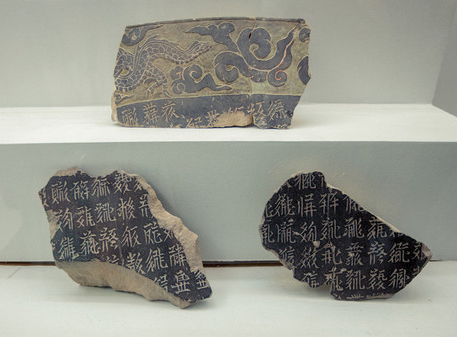
The architecture of the buildings is also a hectic mixture of traditional Song, Buddhist, and Tangut features. Tiered tomb walls, high towers, funerary objects, stone statues, and delicate inscriptions have all given researchers an invaluable insight into the ethnic features of the Tangut people and the cultural significance of the Western Xia Dynasty. Many of the steles[1] contain inscriptions detailing the achievements of the kings resting in each mausoleum. From these and other inscriptions, historians have discovered that the platform in the west was used for sacrificial offerings, while the 23-metre (75 ft.) tall earth pile behind it was once a solid pagoda.
Not only that, but these inscriptions show that Mausoleum No. 3 most likely belonged to Li Yuanhao, who was Western Xia’s first official king under the imperial name Jingzong. Many of the relics unearthed from his tomb, including fabulous works of art and stunning sculptures, are currently on display at the Western Xia Museum, which is located near to the entrance of his tomb. It’s the ideal place to learn more about this mysterious kingdom, shrouded as it is by the annals of time.
Note:
[1] Stele: An upright stone slab or pillar that bears an inscription and usually marks a burial site, like a tombstone.
